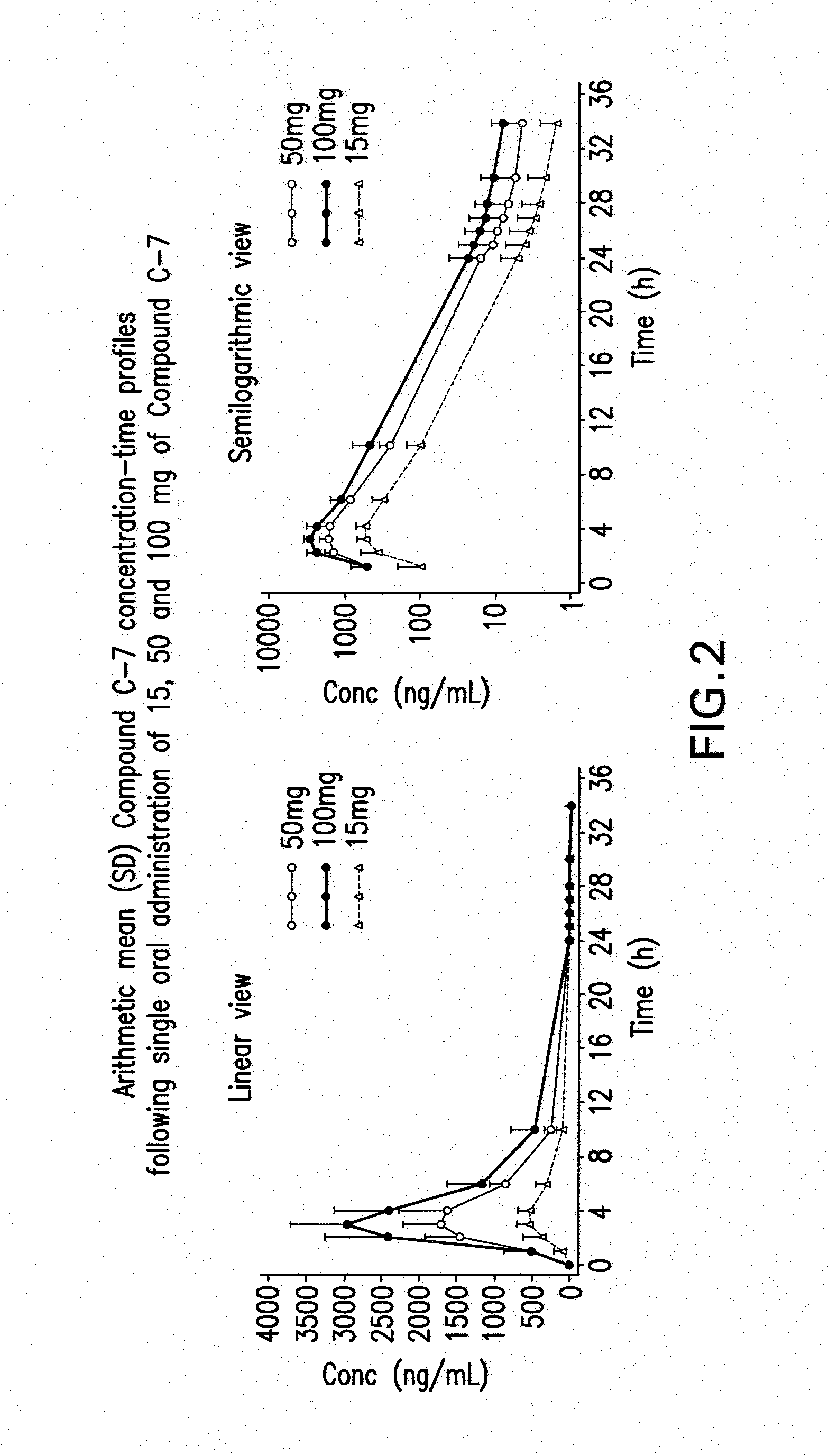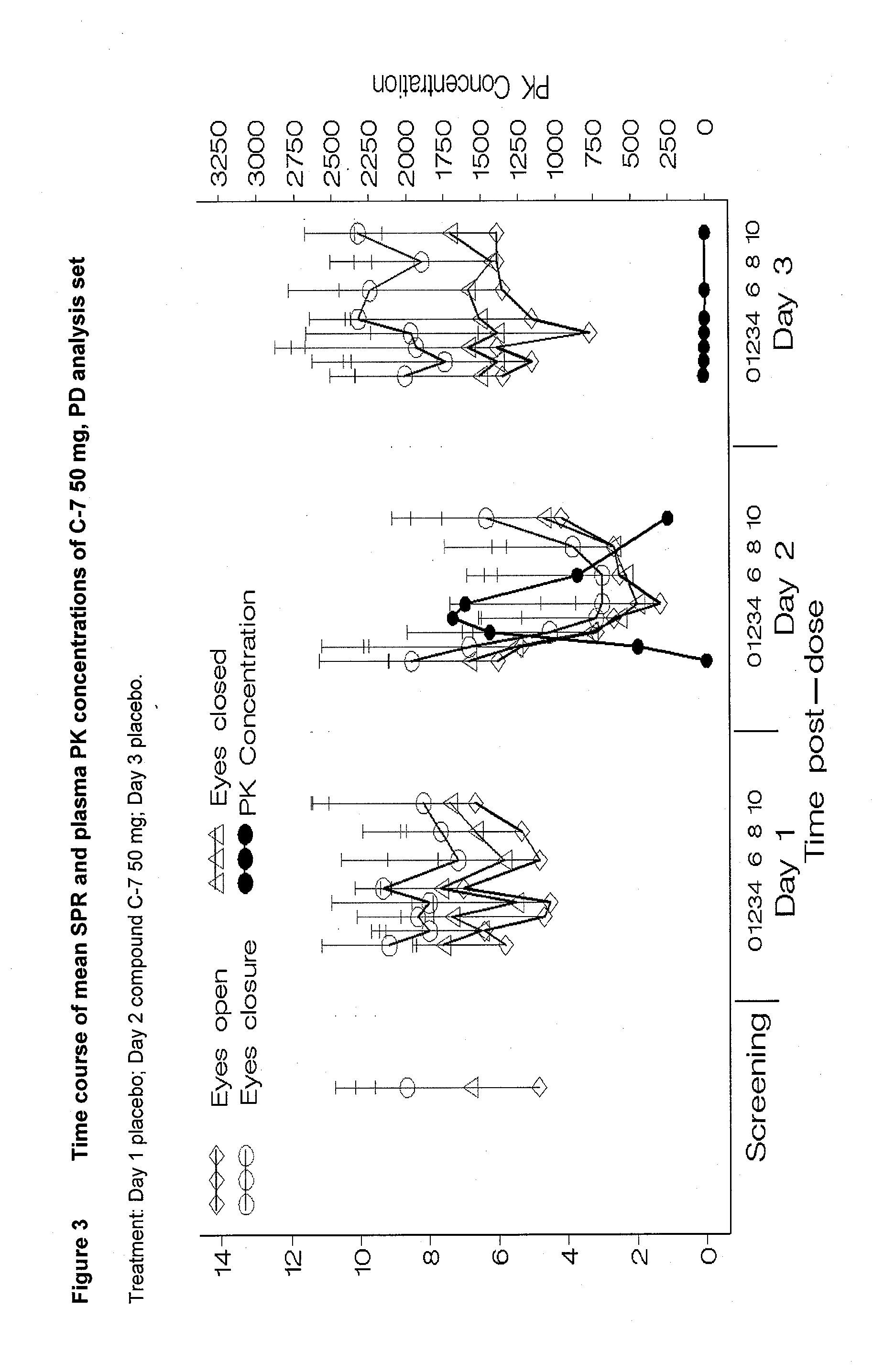Use of 1H-quinazoline-2,4-diones
a technology of 1h-quinazoline and 4diones, which is applied in the field of pharmaceutical uses of 1h-quinazoline2, 4diones, can solve the problems of severe liver injury, birth defects, and seizures caused by artificial light, and achieve the effect of reducing seizures
- Summary
- Abstract
- Description
- Claims
- Application Information
AI Technical Summary
Benefits of technology
Problems solved by technology
Method used
Image
Examples
examples
[0157]The compound C-7 used in the study described hereinafter is an orally active compound of general formula (I).
[0158]The study used the IPS / PPR paradigm. It was a multicenter, non-randomized, single blind, within-subject, placebo-controlled proof of concept study conducted to assess the effect of single oral doses of the compounded formula C-7 in suppressing the photoparoxysmal response (PPR) or reducing the standardized photoparoxysmal response range (SPR) in patients with PSE. Photosensitivity was detected using electroencephalography (EEG) measurements of subjects exposed to Intermittent Photic Stimulation (IPS). This EEG response was a photoparoxysmal response (PPR). For the purpose of the study, provocation of PPRs by IPS, not of seizures, was required. The SPR of each patient was the number of standard visual stimulation frequencies (in Hertz) that the patient was sensitive to between the lower and upper thresholds. 14 frequencies were tested (from 2 to 60 Hertz). The time...
PUM
| Property | Measurement | Unit |
|---|---|---|
| frequencies | aaaaa | aaaaa |
| frequencies | aaaaa | aaaaa |
| frequencies | aaaaa | aaaaa |
Abstract
Description
Claims
Application Information
 Login to View More
Login to View More - R&D
- Intellectual Property
- Life Sciences
- Materials
- Tech Scout
- Unparalleled Data Quality
- Higher Quality Content
- 60% Fewer Hallucinations
Browse by: Latest US Patents, China's latest patents, Technical Efficacy Thesaurus, Application Domain, Technology Topic, Popular Technical Reports.
© 2025 PatSnap. All rights reserved.Legal|Privacy policy|Modern Slavery Act Transparency Statement|Sitemap|About US| Contact US: help@patsnap.com



